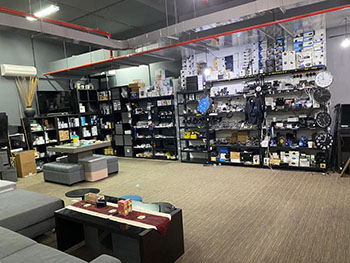Why Body-Cam Footage Might Not Clear Things Up
When we try to find out ways to address the problem of police violence against black men and women, police body-worn cameras emerge as troubleshooters to increase accountability and assist rebuild community trust. People expect these cameras as a key part of the solution.
Sacramento Police killed Stephen Clark, an African-American person in the backyard of his grandmother. Protests began after his murder over the action of the police. Police were of the view that they thought Clark was armed. But the police officers did not find any weapon near the dead person except a mobile phone. The city Police chief tried to respond to the protesters through Body Worn Camera footage. He demanded footage of the body camera from the Police Officer. He wanted to distinguish the reality before the public. But unfortunately, the footage was not likely to solve the issue. The whole scene in it was obscure.
This incident indicates that Body Camera footage is not completely reliable for resolving issues. Research of psychology scholars focuses on the legal implications of memory errors. Research of legal scholars and psychologists suggests that body-worn cameras may not give desired results and exact solution over police behavior.
There is an expectation among the public that body-worn camera video will plainly show what happened in serious incidents involving police and civilians. The public expects body-worn cameras will facilitate unfasten the gradually more conflicting accounts between police and citizens about what happened during fatal or near-fatal encounters. This hope has inspired local and federal government to spend millions of dollars on the adoption of body-worn cameras on a large scale. Simply, people trust what they see. They think that the video can be a cure that will weaken the number of communications between police and citizens that result in excessive force.
But experts of psychology suggest there are at least three reasons why body cameras will not give the desired objectives people expect.
First reason is the limitation of body-worn cameras. Footage of Body cameras typically provides a restricted view of an incident. What people can see is often vague, because of the positioning of the camera at chest height on the officer’s uniform. Another limit is environmental obstructions and camera lens lay an impact on the footage. The most important, people perceive vague stimuli in ways that match their beliefs and preferences.
People’s attitudes towards police influence what they see in police footage. For example, when people watched a video of an officer interrelating with a citizen, those who received instruction to focus on the officer and who identified with police-that is, they reported thinking they had the same values to police officers or shared the same background-viewed the officer’s actions as less convicting.
These people also inclined to recommend more soft punishment for the officer compared to people who focused on the officer but did not identify with police. So, if you trust police officers and believe you share values of police, you see their conduct as more justified.
Second, the fact the body-worn camera does not show the officer it means people will focus only on the civilian’s actions and behavior. That can have significant results. For example, in police interrogations, when the camera directs only at the suspect, people lean to discount the detective’s role in the scene. On the contrary, when they can see the police officer, they think about how indicative the interrogation methods may be and tend to be more sympathetic to the suspect. This means the outlook of the camera twists the information people focus on.
Another noticeable fact is body cameras focus on the civilian, people may ignore key information concerning the officer’s role in the encounter. Certainly, some evidence suggests that a body-worn camera recording of a police encounter can draw a widely different sketch than the body-worn camera, leading to completely different conclusions about what the footage shows.
Third, people’s general approach toward police doesn’t just influence how they interpret the police behavior in video recording. Those approaches also influence what they remember seeing in body camera video recording. We have observed that people who recognized with police were more likely to hinge on an officer’s report to make sense of what they saw in the body camera footage.
More specifically, they reported that the civilian in the video was exercising a knife though no knife was in the video because the police officer said he saw a knife. Those who watched the video were trying to make the intellect of the officer’s sanctions using the information they had previously learned, even though it did not fit with the video recording.
In essence, the officer’s report served as a source of deceiving information, and that is what people remembered seeing. Unluckily, research on misinformation effects such as this shows they are disreputably difficult to correct, even, when people are warned the information is wrong or are given an explanation for why the error occurred.
All of these aspects would pose less of a problem if people could admit their biases and correct for them. But, they don’t.
As a substitute, people believe that what they see and remember is a correct representation of the world, even if what they observe and remember is incorrect.
Fascinatingly, people admit that biases in other people’s awareness and memory will minimize the other people’s capability to be objective observes of police video recording. But people think they can put their own biases aside. The psychological literature proposes that this belief is incorrect and may undermine the ability for critical consideration.
Body camera footage is extremely valuable because it will likely protect both officers and civilians from fake accusations. However, people’s visual and memory biases are more probable to emerge when evidence is vague and people are overconfident in their objectivity.
So, the footage Body-worn camera is unlikely to be the only solution to improve laden police-community relations. The justice system is going to have to struggle further with how to handle these problems.
Before concluding the article we are going to present research from The Center for Evidence-Based Crime Policy at George Mason University. They published the research in the journal Criminology & Public Policy. It is a profound research on body-worn cameras. It brought many eye-opening facts to the scene. Researchers observed that body-worn cameras are the cause of changing the behavior of police officers for a better impact at the time of the untoward incident. When police officer feels they are under the surveillance of camera they start to treat the citizen in a civilized way. In many departments, the cameras have not had a reliable or significant effect on the citizen’s opinion of the police.
The research is the latest to note that a body camera is a valuable tool in some contexts but one should not expect it that it is single-handedly important in accountability.
The researchers pointed out that the study did not find a decrease in public complaints. The study also indicated that police started to dislike the cameras well after the police department adopted the body-worn cameras. The camera programs fueled a drawback in police activity and increased fears and workloads among them.
There was another opinion among the researchers. They noted another aspect of their study that the officers wearing cameras receive fewer complaints. It potentially suggests that the cameras are changing officer behavior in a way that reduced negative dealings while according to the first opinion the cameras did not affect the number of police complaints. The first opinion had more arguments and proofs.
According to the overall outcome of the research, body-worn cameras have not brought any revolution to develop accountability in the police department or led to essential improvements in public opinion for the department that has adopted them.
The Mason researchers also noted that some of the biggest criticism of body-worn cameras that they would fuel a reduction in the activity or mobility of the police. The report does suggest that in some departments the cameras made the already challenging relationship between police and citizen worse especially if citizens expected to use the camera to increase police accountability but officers primarily use the cameras to increase the accountability of citizens.
Some department has just announced that they would end or back away from launching camera programs because of high costs, the speedy spread of body cameras suggests that many departments will continue to use the technology. But there are still ample issues about how can they use body-worn cameras, mainly when it comes to who can access body camera footage, often the police department hides the facts from civilians and doesn’t let them see incidents of police misconduct.
It means that continued examinations of exactly what effects camera programs are having, and how do procedures in a given police department influence their success or failure?
Mr. Christopher S. Koper, a Mason Professor and co-author of the report explained that for enhancing the positive impacts of body-worn cameras, we suggest concentration to the ways and contexts-organizational and community-in which the devices are most useful or harmful.
The police department should also pay attention to how is to use cameras in police training, management, and internal investigations to improve police performance, accountability, and legitimacy in the community









